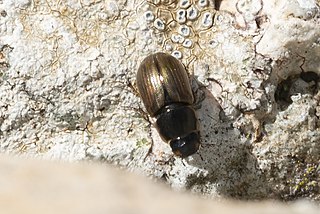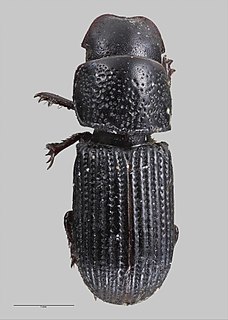
The Third Battle of Kharkov was a series of battles on the Eastern Front of World War II, undertaken by Army Group South of Nazi Germany against the Soviet Red Army, around the city of Kharkov between 19 February and 15 March 1943. Known to the German side as the Donets Campaign, and in the Soviet Union as the Donbas and Kharkov operations, the German counterstrike led to the recapture of the cities of Kharkov and Belgorod.

The Nimbus satellites were second-generation U.S. robotic spacecraft launched between 1964 and 1978 used for meteorological research and development. The spacecraft were designed to serve as stabilized, Earth-oriented platforms for the testing of advanced systems to sense and collect atmospheric science data. Seven Nimbus spacecraft have been launched into near-polar, sun-synchronous orbits beginning with Nimbus 1 on August 28, 1964. On board the Nimbus satellites are various instrumentation for imaging, sounding, and other studies in different spectral regions. The Nimbus satellites were launched aboard Thor-Agena rockets and Delta rockets.

Freiherr Hasso Eccard von Manteuffel was a German baron born to the Prussian noble von Manteuffel family and was a general during World War II who commanded the 5th Panzer Army. He was a recipient of the Knight's Cross of the Iron Cross with Oak Leaves, Swords and Diamonds of Nazi Germany.

Operation Winter Storm, a German offensive in December 1942 during World War II, involved the German 4th Panzer Army failing to break the Soviet encirclement of the German 6th Army during the Battle of Stalingrad.

Horace Elva Tapscott was an American jazz pianist and composer. He formed the Pan Afrikan Peoples Arkestra in 1961 and led the ensemble through the 1990s.
The Scanning Multichannel Microwave Radiometer (SMMR) [pronounced simmer] was a five-frequency microwave radiometer flown on the Seasat and Nimbus 7 satellites. Both were launched in 1978, with the Seasat mission lasting less than six months until failure of the primary bus. The Nimbus 7 SMMR lasted from 25 October 1978 until 20 August 1987. It measured dual-polarized microwave radiances, at 6.63, 10.69, 18.0, 21.0, and 37.0 GHz, from the Earth's atmosphere and surface. Its primary legacy has been the creation of areal sea-ice climatologies for the Arctic and Antarctic.

Omorgus is a genus of beetles of the family Trogidae with about 140 species worldwide. Omorgus beetles are generally between 9 and 20 mm long.

Trox is a genus of hide beetle in the subfamily Troginae.
Nimbus (1946–1972) was a British Thoroughbred racehorse. In a racing career which lasted from the spring of 1948 until August 1949, he ran nine times and won six races. Nimbus ran successfully as a two-year-old in 1948, winning the July Stakes, but reached his peak the following year. He won close finishes in both the 2000 Guineas and The Derby but was unable to attempt the Triple Crown after his career was ended by injury. He had modest success as a breeding stallion.
Polynoncus is a genus of beetles of the Family Trogidae. It contains the following species:

The Panzer 68 was a Swiss main battle tank developed by the Eidgenoessische Konstruktionswerkstaette in Thun in the late 1960s, and was the main tank of the Swiss Army until the late 1990s.

Onthophagus is a genus of dung beetles in the Onthophagini tribe of the wider scarab beetle family, Scarabaeidae. It is the most species-rich and widespread genus in the subfamily Scarabaeinae, with a global distribution.
Paolo Pittino is an Italian lightweight rower. He won a gold medal at the 1999 World Rowing Championships in St. Catharines with the lightweight men's coxless pair.

Psammodiini is a tribe of aphodiine dung beetles in the family Scarabaeidae. There are about 12 genera and at least 50 described species in Psammodiini.

Pleurophorus is a genus of aphodiine dung beetles in the family Scarabaeidae. There are more than 30 described species in Pleurophorus.
Glyptotrox is a genus of hide beetle in the subfamily Troginae. It contains the following species:

Melinopterus is a genus of scarab beetles in the family Scarabaeidae. There are more than 20 described species in Melinopterus.

Saprosites is a genus of scarab beetles in the family Scarabaeidae. There are more than 130 described species in Saprosites.












